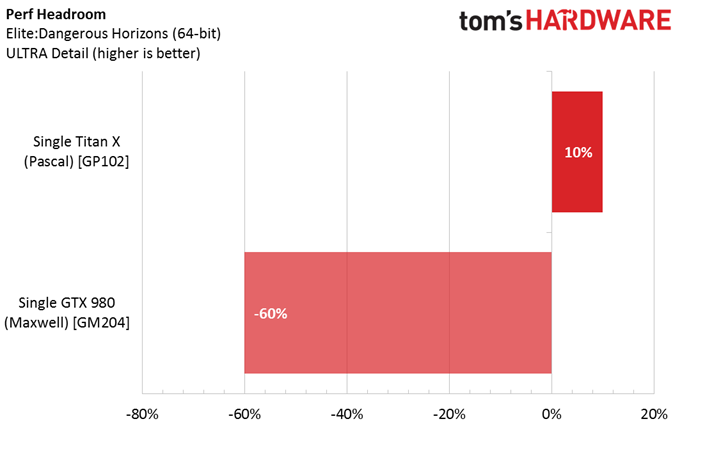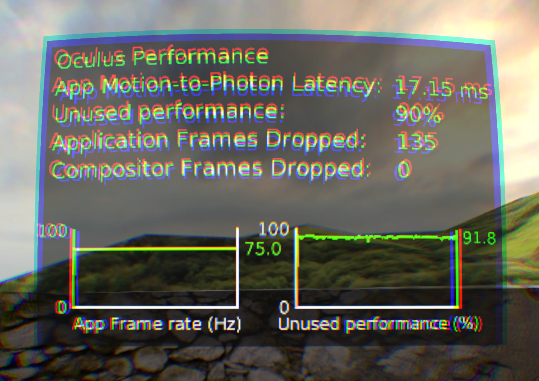Hands-On With Nvidia's Titan X (Pascal) In SLI
We test VR, SLI, Nvidia's new high-bandwidth bridges, and the concern that HBM2 might have been a better choice for Titan X.
SLI And VR
Without going into depth on how SLI works (you’ll find more detail in Nvidia's SLI Technology In 2015: What You Need To Know), it primarily utilizes that AFR technology mentioned on the previous page, which imposes a two-frame delay (or queue) to properly provide scaling benefits. And while you won't mind those extra milliseconds on a typical desktop display, an additional 17 ms of motion-to-photon lag in VR will affect your experience.
The workaround for VR is assigning GPUs to specific eyes for stereo rendering acceleration. This naturally requires optimization on the developer’s end, and as a result, SLI just isn’t supported by most VR titles as of mid-2016.
Consequently, we did some testing of the Oculus Rift using the only title we know punishes a GeForce GTX 980, Elite: Dangerous. We’re manually reporting performance based on the in-HMD debug tool display. Unfortunately, Oculus has not responded to our requests to enable logging-to-disk of that tool's data, so we can’t chart that experience out quantitatively.
SLI is disabled in these runs. You can leave the technology turned on in Nvidia's control panel, but the application only exploits one GPU no matter what.



Notice that a single Titan X (Pascal) is barely able to keep up using the Ultra detail preset, with a minimal performance headroom of ~10%. Conversely, a GTX 980 just isn't fast enough to facilitate a smooth experience, averaging 73.1 FPS (below the 90 FPS target), while almost doubling motion-to-photon latency. Not even the Titan X manages to stay below the 20 ms that John Carmack of Oculus describes as the "sweet spot" of VR. You'll have to drop the quality level for an optimal VR experience in Elite: Dangerous for now.
MORE: Best Virtual Reality Headsets
MORE: All Virtual Reality Content
Get Tom's Hardware's best news and in-depth reviews, straight to your inbox.
